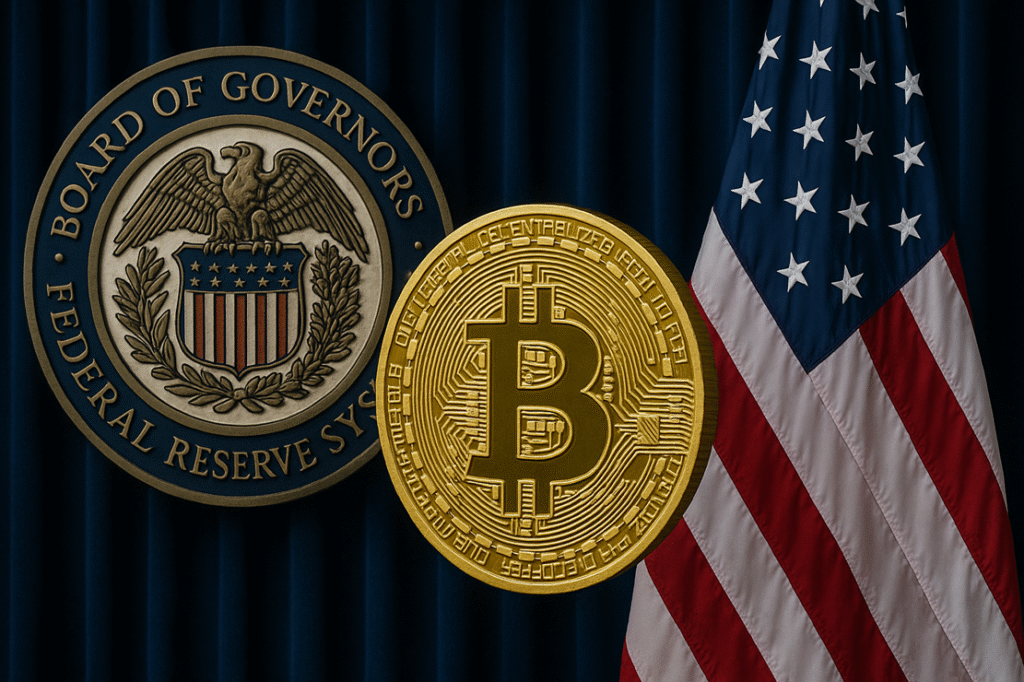In a landscape where economic policies continually shape the fabric of our financial systems, recent developments within the U.S. Federal Reserve have captured significant attention. The strategic nomination of Dr. Stephen Miran to the Federal Reserve Board of Governors marks a pivotal moment for both traditional and digital financial sectors. This appointment comes at a time when the dynamics of monetary policy are under scrutiny, especially with the impending end of Chair Jerome Powell’s term. As the financial world closely monitors these shifts, Miran’s perspectives on cryptocurrency and financial deregulation offer intriguing possibilities for the future of economic governance.
Strategic Shifts at the Federal Reserve: The Appointment of Dr. Stephen Miran
Background and Implications of Miran’s Appointment
Miran’s nomination to the Federal Reserve Board by President Donald Trump, pending Senate confirmation, serves as a critical junction in U.S. monetary policy. With a term lasting until January 31, 2026, his appointment fills the vacancy left by the early resignation of Governor Adriana Kugler. This move allows the White House to gain an immediate foothold in the Federal Reserve’s decision-making processes amid ongoing discussions about future leadership, particularly concerning the successor to Chair Jerome Powell.
Miran’s extensive experience spans both market and policy realms. Before chairing the White House Council of Economic Advisers (CEA), he contributed to the Treasury during the pandemic and engaged in macroeconomic investing. His published works advocate for pivotal reforms at the Fed, including shorter board terms, enhanced Reserve Bank authority, and a more accountable budget under congressional supervision. These changes aim to recalibrate the central bank’s governance for enhanced accountability and efficiency.
Potential Policy Impacts and Market Reactions
As markets digest Miran’s nomination, the immediate policy implications are subtly bounded by his short term. However, the broader symbolism is clear: the administration is signaling a push for rate cuts and a comprehensive re-evaluation of the Fed’s stance post-Powell’s leadership. Miran’s alignment with the current administration’s economic strategies suggests a potential shift in monetary policy frameworks during his tenure.
Miran has critiqued the Fed’s actions during the pandemic, highlighting concerns over the central bank’s “excessive monetary accommodation” and its premature labeling of inflation as “transitory.” His advocacy for a restructured international monetary system and strategic use of tariffs aligns closely with the administration’s macroeconomic objectives.
The Cryptocurrency Connection: “Bitcoin Fixes This”
Within the cryptocurrency community, Miran’s appointment has sparked significant interest, largely due to his engagement with the sector. Known for his “Bitcoin fixes this” sentiment, Miran’s stance resonates with advocates of financial deregulation and digital currency innovation. In a notable interview with The Bitcoin Layer in December 2024, he emphasized the potential role of crypto in driving economic growth.
The reaction within cryptocurrency circles has been swift, with industry figures highlighting his supportive views on Bitcoin. His past remarks underscore a belief in the transformative power of digital assets within the broader financial ecosystem, aligning with a vision for deregulated financial innovation.
Anticipated Reforms and the Road Ahead
Miran’s proposals for reforming the Federal Reserve suggest significant changes in governance and fiscal policy. Among these is a call to delineate monetary functions from non-monetary activities, ensuring a tighter focus on price stability. Such reforms could reshape the institutional framework of the Fed, reinforcing its technocratic independence while navigating upcoming leadership changes.
As Miran awaits Senate confirmation, his potential impact could extend beyond immediate policy changes, influencing broader shifts in economic strategies and preparations for Powell’s succession.
Is Bitcoin a viable solution to monetary policy issues?
Bitcoin presents an innovative approach to financial deregulation and could offer greater transparency and efficiency in monetary transactions. However, its role as a comprehensive solution requires careful consideration of regulatory, technological, and market dynamics.
What are the expected changes in U.S. monetary policy with Miran’s appointment?
Miran’s appointment may lead to a more conservative monetary policy, emphasizing reduced government intervention and a focus on restoring democratic accountability within the Federal Reserve’s operations. His stance suggests a potential shift towards rate cuts and an adaptable approach to economic challenges.
How does Stephen Miran’s background influence his economic perspectives?
Stephen Miran’s diverse experience in both policy-making and market investment informs his approach to economic governance. His advocacy for Fed reform reflects a desire for increased efficiency and accountability, rooted in a thorough understanding of macroeconomic dynamics.
What is the significance of Miran’s views on cryptocurrency?
Miran’s positive outlook on cryptocurrency highlights its potential role in financial innovation and economic growth. His recognition of Bitcoin as a tool for financial deregulation aligns with a growing interest in digital assets as a means of diversifying financial portfolios and enhancing economic resilience.

